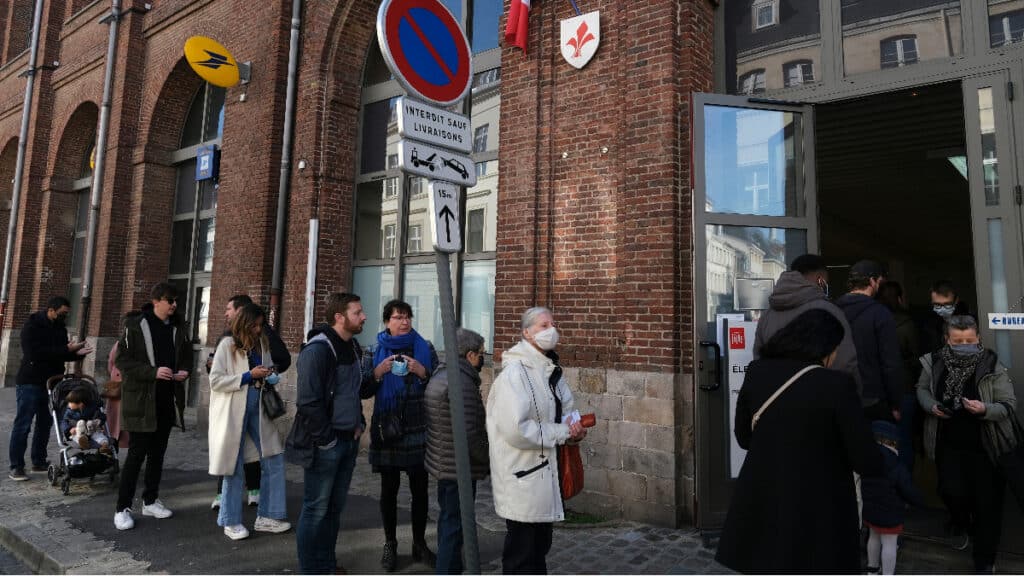Digital Democracy and Left Party Politics in the 2022 French Presidential Elections
Tamian Derivry / Sep 28, 2022Tamian Derivry is a double master's degree candidate in European Studies and Political Science at Sciences Po Paris and the Free University of Berlin.

On both sides of the Atlantic, social media have become important platforms for far-right politics. In France, they contributed to the rapid rise of polemicist Éric Zemmour during the last presidential elections, which took place in April 2022. The political observatory launched by French startup Favikon presented data showing that Zemmour dominated most major social media platforms just months before the election, and a study by the newspaper Le Monde showed that Zemmour's visibility on Twitter was partly manufactured by massive retweets and automation techniques.
Conversely, left-wing movements have claimed that social media and other digital tools have become essential catalysts for mobilization. Many believe that digital platforms can help build citizen and cross-party movements, and that they have the potential to enable radical democratic practices and values. This belief is grounded in decades of theorizing on digital or "network democracy," which is based on the idea that networked individualism can enable direct citizen participation and transcend traditional political structures.
But can the left really compete in the use of digital tools? And to what extent can digital platforms actually help transcend traditional political structures? The last French presidential elections offer valuable insights into these questions, as they saw an increase and several innovations in the use of digital tools and platforms by left-wing movements.
Digital campaigns: the left lags behind, the far-left catches up
The focus in the academic literature and the media alike has been on the responsibility of platforms that encourage the spread of hate speech, disinformation, and dangerous far-right discourses. While platform design certainly plays a role, these discourses do not arise spontaneously or spread solely as a result of algorithmic curation. The online propagation of right-wing and far-right discourses is also the result of the work carried out by political organizations that invest more and more resources in online communication. As Jen Schradie shows in the U.S. context, right-wing organizations have been pioneers in harnessing the power of online platforms by investing time and money in digital communication.
French political parties need to make their campaign expenses public some months after elections. Public data on the last presidential election show that the right and far-right parties invest the most in digital services. The table below shows the evolution of campaign spending on digital services for the five largest French political parties between the 2017 and 2022 presidential elections. In 2017, the main far-right party, the National Rally (RN), invested significantly more resources, but other parties are now catching up, especially the main far-left party, France Unbowed (LFI), which has more than tripled its spending on digital services in five years.
Yet, the share of spending allocated to digital services remains significantly higher for the National Rally, almost twice that of the right and far-left parties in 2022. The Socialist Party (center-left), lags clearly behind the others and spends less than one percent of its budget on digital services.
A closer look at the campaigns reveals that left-wing groups are increasingly using digital tools, but not necessarily in the same way as the right. As Jen Schradie argues, the left tends to emphasize the use of digital tools for mobilization rather than information dissemination, whereas right-wing groups see social media as a space to voice opinions they don't see represented in mainstream media. Besides, even if left-wing movements are present on big platforms such as Facebook or Instagram, there is a certain level of mistrust towards American companies, which is one of the main reasons why France Unbowed designed its own application for online mobilization. But as this was not the focus of this study, further research would be needed to analyze differences in the use and perception of digital platforms across the left-right spectrum in France.
The emergence of digitally-enabled political movements
With these ideological and material constraints, left movements are nonetheless experimenting with new ways of using digital tools. The French left has been particularly fragmented since the five-year term of moderate left-wing president François Hollande. There were four left-wing parties represented in the 2017 elections, and six in 2022. In the context of tense power conflicts between political parties, a union of the left was envisioned through the promise of online mobilizations. Several emerging movements carrying the hope of a unified left were centered on the use of digital tools and platforms:
- The People's Primary was initiated by independent activists to nominate a common left-wing candidate for the 2022 French presidential election. The movement organized an open sponsorship process to nominate potential participants, which took place online between July and October 2021, followed by the actual vote between seven candidates from January 27 to 30, 2022. Nearly 400,000 people participated in the vote. which was held exclusively online using a majority judgment system.
- The Taubira Collective is another movement initiated by independent activists, which emerged from the meeting of a Facebook page and an Instagram account supporting the candidacy of the former Minister of Justice Christiane Taubira. As such, the movement has often claimed to have been born on social media. The collective gathered more than 70,000 signatures calling for the candidacy of Christiane Taubira, motivating her to take part in the vote of the People's Primary, which she eventually won.
Both the Taubira Collective and the People’s Primary are citizen-led and cross-party (they were created outside political parties), and both heavily relied on digital technologies to mobilize an electorate. Existing research on the effect of digital technologies on party politics has focused on whether social media helps revitalize citizen engagement in party activities. Little has been done to assess their potential to change party politics at the organizational level. The emergence of the People’s Primary and the Taubira Collective is a good opportunity to study the ways in which digital tools can enable emerging political movements to become competitive actors in party struggles.
High concentration of online engagement
To assess how these movements did online, I compared their level of engagement on Twitter with other comparable groups. Tweets were collected from left party/campaign accounts (@Taubirapour2022 for the Taubira Collective, @EELV for the Green Party, @partisocialiste for the Socialist Party, @Melenchon_2022 for France Unbowed) from 1 January to 1 March 2022 and accounts promoting primaries (@PrimairePop for the People’s Primary, @lesRépublicains for the Republican primary, @EELV for the Green primary) from 2 weeks before each vote to 2 weeks after, using Minet, a web mining tool developed by Sciences Po researchers. Engagement scores were calculated based on Twitter metadata, and allowed to aggregate different interaction layers (retweets, likes, replies).
The data shows that the Taubira collective is doing slightly better on Twitter than the historic left-wing Socialist Party, or the Green Party, which did well in the last local elections. However, all these movements have scores barely comparable to the Twitter account of France Unbowed’s campaign account, which concentrates most of the online engagement on the left on Twitter.
The People’s Primary does better than the Green primary on Twitter, but its level of engagement is half that of the Republican Primary. For comparison purposes, the Twitter account of France Unbowed does almost 4 times better on Twitter than the People’s Primary over the same data collection period.
It may be argued that online party politics have become so personalized that party/campaign accounts are much less relevant than candidate accounts. But in fact, similar dynamics can be observed with candidate accounts. Data presented by Favikon shows that France Unbowed’s candidate, Jean-Luc Mélenchon, has the highest level of online engagement of all candidates to the presidential election. He is followed by Eric Zemmour, President Emmanuel Macron, the National Rally’s candidate Marine Le Pen and the Republican candidate. All other left-wing candidates have lower scores, and although Christina Taubira, the candidate of the People' s Primary and the Taubira Collective ranked in the top 10 for a while, she remained below Mélenchon in the long run.
The myth of digital democracy?
Although they generated some momentum, both the People’s Primary and Taubira Collective failed in their attempts to unify the left. There are many possible explanations for this, including the fact that these initiatives lacked resources and were not supported by any of the big political parties. Digital tools, which these movements claimed could help build massive citizen mobilizations, did not ultimately transcend party politics. On the contrary, the high concentration of engagement on online platforms may to some extent hinder political pluralism. Following the presidential election, the French left did forge an alliance for the legislative elections but not with the help of digital tools. In fact, the alliance was the result of traditional party negotiations led by France Unbowed, which is the left-wing movement that obtained by far the highest score of the left in the elections.
The experimentation of the left during the last French presidential elections suggests that left movements, and more specifically in France, far-left movements, are starting to reclaim digital spaces, emphasizing their potential for mobilization. They also highlight that digital activism tends to be constrained by power relations, ultimately benefiting those with the most economic and social resources. Yet, social media platforms do sometimes enable bottom-up mobilizations to challenge power structures, as illustrated by the Me Too or Black Lives Matter movements. It is quite possible that initiatives like the People’s Primary will eventually develop. Online voting will certainly allow other such initiatives to emerge. But political structures will remain relevant because digital campaigns require significant investment and powerful organization.
Authors
